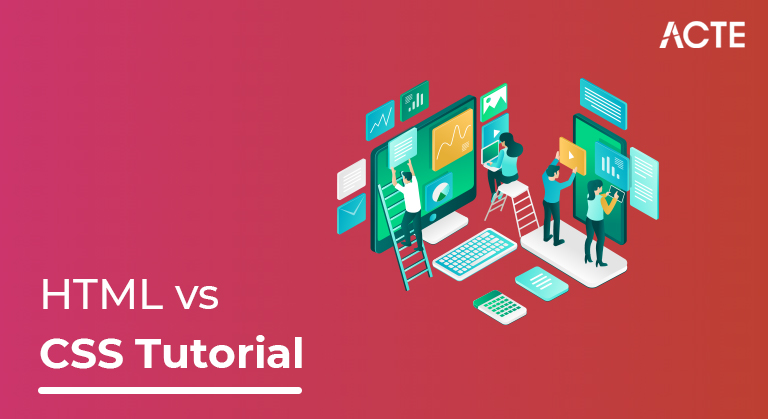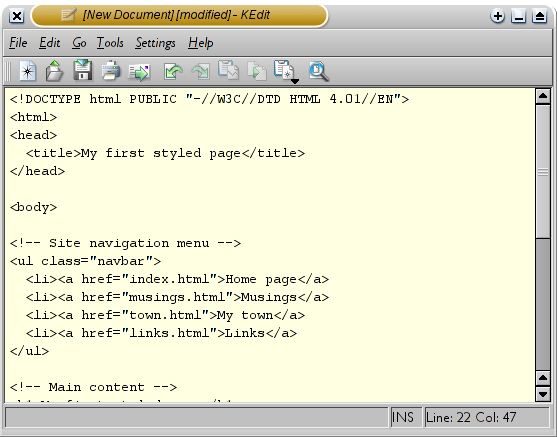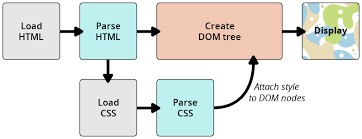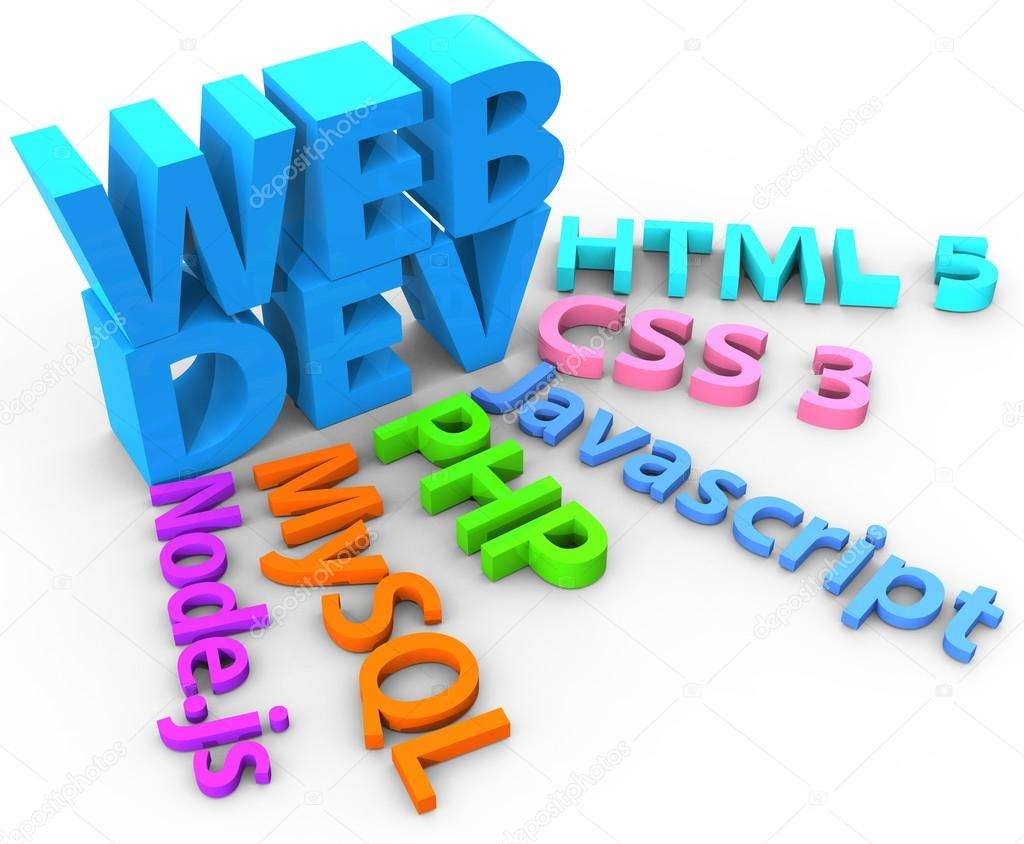
- Introduction to HTML, CSS
- What is the distinction between HTML and CSS?
- Characteristics of HTML
- Characteristics of CSS
- Example of HTML and CSS
- How CSS is superior to HTML?
- Upsides and downsides
- Tools of HTML and CSS
- Programming in Web Development
- Advantages and Disadvantages of HTML
- Advantages and Disadvantages of CSS
- Conclusion
- I come from a group of teachers. My folks are the two instructors, similar to my sibling. I was the just one in my family not to turn into an instructor. All things considered, I love helping other people, spreading the information I have about website composition, and showing whenever the situation allows. With that in mind, I regularly talk at various gatherings and schools, just as host an intermittent studio.
- While doing as such, I persistently get inquiries concerning HTML and CSS. Along these lines, I composed this book to be that ideal, sweeping asset for learning HTML and CSS. Customarily, you’ll see books that show HTML first and afterward CSS, keeping the two dialects different. However, when they’re instructed autonomously, things don’t meet up until the end, which is disappointing for another person to HTML and CSS.
- I needed to adopt an alternate strategy, showing the two dialects simultaneously with the goal that you can see your rewards for all the hard work as soon as possible. This book means to carry moment delight to the website architecture process. It was additionally essential to me that the book be project-based, giving a finished site to perusers who work through the book from beginning to end. Not every person learns by perusing alone, so I needed to give a substantial site to permit individuals to advance experientially.
Introduction to HTML, CSS :-

Would it be a good idea for me to learn HTML or CSS first?
Falling Stylesheets – or CSS – is the principal innovation you should begin learning after HTML. While HTML is utilized to characterize the design and semantics of your substance, CSS is utilized to style it and spread it out.
What is the distinction between HTML and CSS?
|
| |
|---|---|
| HTML is an abbreviation of “Hyper Text Markup Language,” which is utilized for making site pages and web applications. It is easy to utilize and has free grammar. It is almost settled on each site and upheld by each program. It is not difficult to learn and code. It is allowed to utilize and doesn’t need any permit. | CSS represents Cascading Style Sheets. It is a template language that portrays the look and report’s organizing written in the markup language. It assists us with adding new looks to our old HTML reports. By rolling out certain improvements in the CSS code, we can without much of a stretch change the vibe of the site. It gives an extra element to HTML. CSS decreases the work by controlling the format of various site pages. CSS is not difficult to keep up with and has great local area support. |
| Hyper Text implies the “Text inside Text.” A text that encapsulates a connection, is a hypertext. At whatever point we click on a connection that carries us to another site page, we click on a hypertext. Hyper Text is a method for connecting at least two pages (HTML records). | It is for the most part utilized with HTML to change the style of site pages and UIs. It can likewise be utilized with any sort of XML records, including plain XML, SVG, and XUL. CSS is utilized alongside HTML and JavaScript in many sites to make UIs for web applications and UIs for some versatile applications. |
| A markup language is a coding that is utilized to apply design and organizing shows to a text report. Markup language makes the text more intelligent and dynamic. It can transform the text into pictures, tables, joins, and so forth | Both HTML and CSS are customer-side web prearranging dialects that are utilized for making site pages. Numerous ways make the distinction between HTML and CSS, like the executing techniques, their grammatical design, convenience, and the elements like credits. |
Characteristics of HTML :-
HTML is the markup language that depicts the construction of website pages.
1.Reliance: We can’t utilize the design configuration and HTML sentence structure in CSS templates.
2.Execution: It is for website page design and content.
3.Engineering: HTML utilizes labels that are encompassing the substance of any site page component.
4.Approach: We use it principally to foster the fundamental substance of the site page.
5.Support: HTML has a great deal of local area support that assists with using different website page structure draws near.
Characteristics of CSS :-
It is the template language used to portray the show and plan of site pages, including shadings, formats, and others.
1. Reliance: It is autonomous of HTML and can be utilized with any XML-based markup language.
2. Execution: It is mostly for planning and show.
3. Engineering: It comprises selectors that are proclaimed utilizing block proclamation linguistic structure.
4. Approach: For the most part, it is utilized for page style designs, planning of the web, formats, and some more.
5. Support: It likewise has huge local area support and a gigantic reinforcement for persistent upgrades in web planning.
- HTML is not difficult to learn with a reasonable linguistic structure, though the CSS now and then make intricacies in code and get chaotic.
- HTML records can incorporate the CSS code, however, it isn’t something similar to CSS because CSS can never contain the HTML codes.
- HTML utilizes labels, while the CSS utilizes selectors.
- HTML is utilized to make site pages, while CSS controls the format and styling of website pages.
The other normal contrasts among HTML and CSS are given as follows :
- Start tag: <'tag attribute1= "value1" attribute2="value2"> (It is utilized to characterize the start of the component)
- Content: It can be messages, connections, pictures and other data present on the page.
- End Tag: <'/tag'> (It is utilized to announce the conclusion of the HTML component)
Example of HTML and CSS :-
Model: <'tag attribute1= "value1" attribute2="value2">”content”<'/tag'>. Here,
The HTML component characterizes a particular segment of a page.

- Selector: h1 (It demonstrates the HTML component which should be styled)
- Property: “shading and textual style” (It characterizes the parts of components that should be changed)
- Statement Block: “shading: white; textual style: italic” (It depicts at least one assertion isolated by semicolons)
- Values: “white and italic” (It demonstrates the boundaries of the chosen properties.
CSS can be utilized in various sorts of gadgets, similar to enormous or little screens and printers. It is free of HTML and can be utilized with any XML-based markup language. The World Wide Web Consortium for the most part keeps up with the CSS determinations. CSS rule-set comprises a selector and an assertion block. It tends to be portrayed as underneath:
Model: h1 { shading: white; textual style: italic }. Here,
- It is not difficult to learn and simple to utilize.
- It is stage autonomous.
- Pictures, recordings, and sound can be added to a page.
- Hypertext can be added to the text.
- It is a markup language.
How CSS is superior to HTML?
HTML gives labels which are encompassing the substance of any site page components, while CSS comprises selectors which are encircled by a revelation block. CSS has a discontinuity, yet HTML doesn’t deliver any such issues. CSS utilizes a lot lesser code and in this manner produces a lot lesser site page stacking time than HTML.

Elements of CSS :-
Utilizing CSS, you can handle the shade of the text, the style of text styles, the dispersing between passages, how segments are estimated and spread out, what foundation pictures or tones are utilized, format designs, variations in the show for various gadgets, and screen sizes just as an assortment of different impacts.
Elements of HTML :-
- Simple to learn and code
- It is allowed to utilize, and no permit is required
- Appropriately deciphered by programs
- It upholds various dialects
- Lightweight and it upholds numerous stages
- Huge people group support
- It has restricted security highlights
- Slow Technical advancement
- Being a static language, it can’t deliver dynamic result
- It has a lot more extensive scope of properties than HTML
- It has further developed site speed, and pages consume less an ideal opportunity to stack appropriately
- It upholds disconnected perusing
- It is viable with numerous gadgets
- It is not difficult to keep up with
- Great people group support
- It gives much-preferred page style designs over HTML
- It has a discontinuity issue, and in this way, it has an exhibition fluctuation between two programs.
- Being an open text-based framework, it doesn’t have any implicit security
- It can get muddled at times and can make entanglements in codes.
Upsides and downsides :-
HTML (Pros):
HTML (Cons):
CSS (Pros):
CSS (Cons):
Tools of HTML and CSS :-
Engineer Tools Most programs have what are known as Developer Tools. These devices permit us to review a component on a page, see where that component lives inside the HTML report, and see what CSS properties and qualities are being applied to it. A large portion of these instruments likewise incorporates a crate model graph to show the processed size of a component.

To see the Developer Tools in Google Chrome, click “View” inside the menu bar and explore “Engineer” and afterward “Designer Tools.” This heaps a cabinet at the lower part of the program window that gives a small bunch of devices to assess our code. Tapping the amplifying glass at the lower part of this cabinet empowers us to drift over and afterward click on various components on the page to survey more data about them. After choosing a component, we’ll see a modest bunch of tabs on the right-hand side of the Elements board inside our Developer Tools.
Choosing the “Figured” tab will show us a breakdown of the crate model for our chosen component. Mess with the Developer Tools, be it in Google Chrome, Mozilla Firefox, Apple Safari, or different programs; there is a lot to gain from checking out our code. I for the most part leave the Developer Tools open consistently when composing HTML and CSS. What’s more, I habitually examine the code of different sites to perceive how they are assembled, as well.
The container model is one of the most befuddling portions of figuring out how to compose HTML and CSS. It is additionally one of the most remarkable pieces of HTML and CSS, and when we have it dominated, most all the other things like situating content will come to us reasonably without any problem.
- Thus, when a website specialist is given an ultimate objective like “make a page that has this header, this text style, these tones, these photos, and a vivified unicorn strolling across the screen when clients click on this button,” the website specialist’s responsibility is to take that enormous thought.
- Split it up into minuscule pieces, and afterward make an interpretation of these pieces into directions that the PC can comprehend – remembering putting this large number of guidelines for the right request or grammar.
- Each page on the web that you visit is assembled utilizing a grouping of independent directions, in a steady progression. Your program (Chrome, Firefox, Safari, etc) is a major entertainer in interpreting code into something we can see on our screens and even interface with.
- It tends to be not difficult to fail to remember that code without a program is only a text record – it’s the point at which you put that text document into a program that the sorcery occurs. At the point when you open a site page, your program gets the HTML and other programming dialects included and deciphers it.
- HTML and CSS are not in fact programming dialects; they’re simply page design and style data. However, before continuing to JavaScript and other genuine dialects, you want to know the essentials of HTML and CSS, as they are toward the front of each page and application.
- In the mid-1990s, HTML was the main language accessible on the web. Web designers needed to meticulously code static destinations, page by page. A ton’s changed from that point forward: Now there are numerous PC programming dialects accessible. Here, I’ll discuss HTML, CSS, and quite possibly the most well-known programming language: JavaScript.
Programming in Web Development :-
- HTML is broadly utilized.
- Each program upholds HTML Language.
- Simple to learn and utilize.
- HTML is light weighted and quick to stack.
- Try not to get to buy any additional product since it’s natural in each window.
- Simple to utilize
- Free language structure (although, being too adaptable won’t suit norms).
- HTML is sufficiently simple to compose
- HTML is that it is not difficult to code in any event, for beginner software engineers.
- HTML likewise permits the use of formats, which makes planning a page simple.
- Extremely valuable for fledglings in the web planning field.
- HTML can be upheld to every single program, if not upheld to every one of the programs.
- HTML is based on pretty much every site, if not all sites.
- HTML is progressively utilized for information stockpiling as like XML language structure.
- Free – You want not to buy any product.
- HTML is available in each window as a matter of course so you do not have to purchase the product which costs excessively.
- HTML has many tags and traits which can shorten your line of code.
- It can’t create dynamic results alone, since it’s a static language.
- Making the construction of HTML archives becomes extreme to comprehend.
- Mistakes can be expensive.
- It is the tedious as the time it consumes to keep up with the shading plan of a page and to make records, tables, and structures.
- It can make just static and plain pages so on the off chance that we’d like powerful pages then HTML isn’t valuable.
- Needed to compose a great deal of code for making a straightforward page.
- We need to check up the censured labels and affirm not to utilize them to seem because one more language that works with HTML has supplanted the primary work of the tag, and henceforth the contrary language should be perceived and scholarly.
- Security highlights presented by HTML are restricted.
- If we want to record long code for making a website page, it creates some intricacy.
- HTML can make just static and plain pages so on the off chance that we’d like powerful pages then HTML isn’t valuable.
- I want to record huge loads of code for making a simple website page.
- Security highlights are bad at HTML.
- On the off chance that we might want to record long code for making a site page, it delivers some intricacy.
Advantages and Disadvantages of HTML :-
Advantage:
Disadvantages:
- CSS saves a ton of time.
- It assists with making reliable and unconstrained changes.
- It further develops the stacking rate of the page.
- CSS can re-position.
- It has better gadget similarity.
- There could be cross-program issues while utilizing CSS.
- There could be cross-program issues while utilizing CSS.
- There are various degrees of CSS like CSS, CSS 2, CSS 3. This can make disarray for non-designers and novices.
Advantages and Disadvantages of CSS :-
Advantages:
Disadvantages:
Conclusion :-
After looking at HTML versus CSS over a scope of elements, it very well may be presumed that these are two of the center web prearranging dialects for site page advancement, yet at a similar moment, everyone has its upsides and downsides. Thus, before picking any of them, designers ought to learn and investigate various parts of HTML versus CSS dialects. Hence, in light of the sort of venture need, a season of work, and other talked about viewpoints, these web prearranging dialects ought to be chosen to arrive at the ideal objective.






